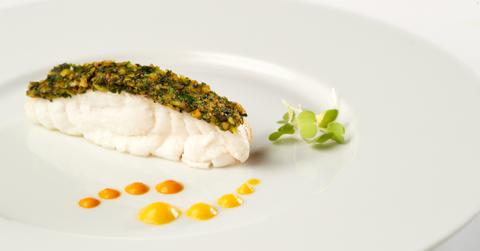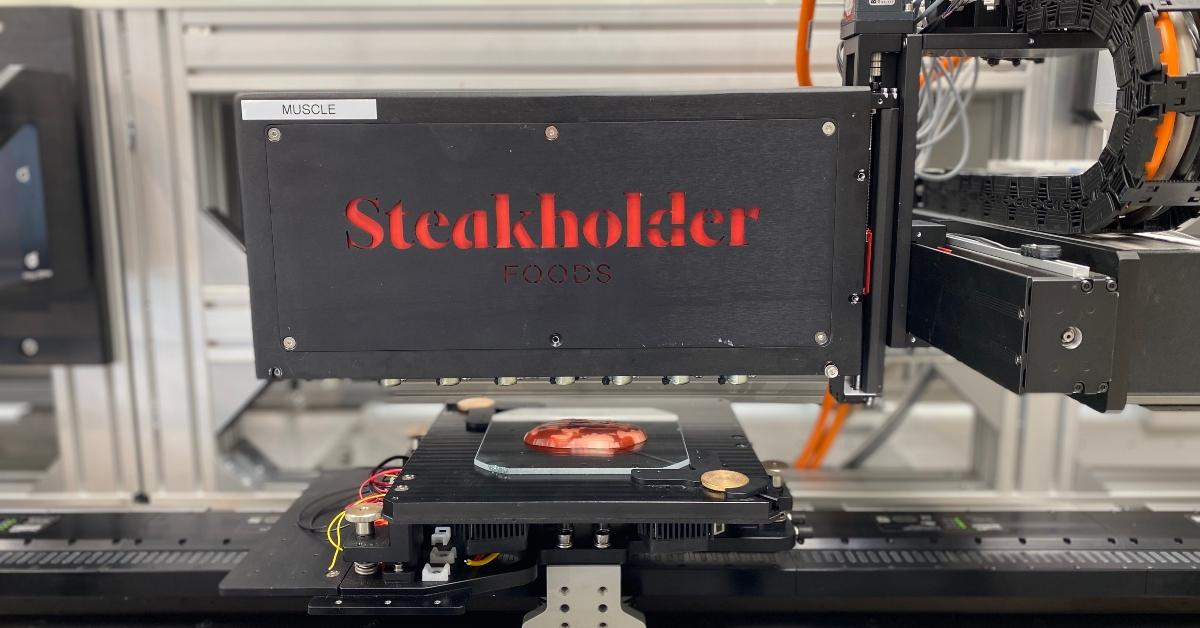Dinner's Ready! Steakholder Foods Is Behind the First 3D-Printed Cultivated Fish (Exclusive)
Updated June 28 2023, 12:45 p.m. ET

Star Trek fans know all about the Replicator, a machine that enabled the crew of the Starship Enterprise to make dinner out of thin air. Although the concept seems like science fiction, the technology is becoming a reality.
Israel-based Steakholder Foods has successfully created 3D-printed meat that is as good to eat as the real thing. In April 2023, the company announced that it successfully printed the first ready-to-cook cultivated grouper fish product. The Steakholder Foods 3D-printed meat was developed through a partnership with Umami Meats, a Singapore-based company that produces cultivated seafood products. Singapore approved the commercial sale of cultivated meats in 2020.
“We are recreating Star Trek,” Arik Kaufman, CEO of Steakholder Foods, has stated.
To learn more about Steakholder foods, Green Matters spoke with Steakholder spokesperson Tzahi Segev via email in June 2023.
"The company was founded to make bio-printed cultivated steak, from sustainable reasons, and animal welfare reasons," Segev tells us.

What is 3D-printed meat?
3D-printed meat is similar to lab-grown meat in that it is real meat made using animal cells. However, instead of being grown in a lab, the cultivated meat product is created using Steakholder Food’s proprietary 3D bio-printing technology and customized bio-inks.
Kaufman described the process in an interview with CNN. First, Umami Meats provides the animal cells taken from animals and fish in an “ethical way” so as not to harm them.
Then, scientists differentiate the cells into either fat cells or muscle cells. The cells are then loaded into a biobank and then into the printers. Technicians can customize the fat percentage and composition of the steak, Kaufman said.
After the steak is 3D-printed, it goes through an incubation and maturation process, meaning the muscle fibers connect to each other and grow. The fully-maturated 3D meat mimics conventional meat's texture, taste and appearance.
“In this first tasting, we showcased a cultivated product that flakes, tastes, and melts in your mouth exactly like excellent fish should,” said Mihir Pershad, CEO of Umami Meats, in a statement.
Segev notes that in taste tests that Steakholder Foods has conducted, people have been impressed by the 3D-printed steak.
"The response of people who taste the printed fish is usually very similar, as they are all surprised by the texture and how similar it is to the real thing," Segev tells Green Matters. That said, the copmany is "still working on our printing technology to improve it."
Steakholder Foods and Umami Meats received a $1 million grant in January 2023 to help them develop 3D-printed eel and grouper products. Funding for the grant came from the Singapore Israel Industrial R&D Foundation.

“With an estimated size of $110 billion and projected growth of 3 to 4 percent annually in the near future, the seafood and fish market is a long-time part of our vision for introducing sustainable solutions that increase food security,” Kaufman said in a press release.
Steakholder Foods is proud that its technology can now make meat of virtually any kind.
"With time, we developed our capabilities of the bioprinter and now we can print any kind of species," Segev tells Green Matters. "These printers can print any type of tissue and create complex types of textures. We also provide the bio-ink, so the users will be able to print whatever they have in mind."
If you want to know more about Steakholder Foods and its process for creating 3D-printed meat, you can follow the company on TikTok, where it shares videos of the production of its unique products.

3D-printed meats are more humane and eco-frienly than animal-based meats.
The main advantage of 3D-printed meats is they are considered more humane than sending animals to the slaughterhouse. They are not meat substitutes, like Impossible Foods, but actual meat products made from the cells of live animals.
Plus, cultivated meat is also better for the environment, seeing as it doesn't need all the land, water, and grain that animal-based meat requires.
“Meat is a centerpiece of culture we must produce in a way that preserves our ecosystems, keeps our food and freshwater secure, and protects the welfare of animals,” reads Steakholder Foods' mission.
This article, originally published on June 27, 2023, has been updated to include quotes from Tzahi Segev.